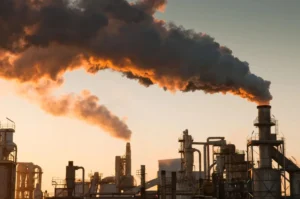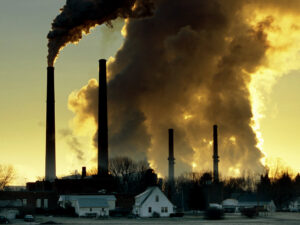how pollution affects our life
air pollution

- Respiratory issues: Inhaling fine particulate matter (PM2.5), nitrogen oxides (NOx), and ground-level ozone can cause lung inflammation, weaken the body’s defense against infections like pneumonia, and trigger or worsen asthma.
- Cardiovascular disease: Vehicle pollution can lead to cardiovascular problems, including an increased risk of heart attacks, strokes, and high blood pressure. Fine particles can enter the bloodstream and contribute to plaque buildup in arteries.
- Neurological damage: Studies have linked exposure to vehicle emissions to reduced cognitive function, memory loss, and a higher risk of conditions like dementia and Alzheimer’s disease.
- Cancer: Long-term exposure to toxic air pollutants like benzene and formaldehyde, found in vehicle exhaust, is a known risk factor for developing cancer.
- Birth defects: Air pollution from vehicles has been associated with adverse pregnancy outcomes, including low birth weight and preterm birth.

- Acidification of water bodies: Acid rain significantly increases the acidity of lakes, streams, and marshes, harming or killing sensitive aquatic animals like fish and amphibians. Highly acidic waters also leach aluminum from the soil, which is toxic to fish.
- Eutrophication: Air emissions of nitrogen oxides can be deposited into waterways, acting as a nutrient. This over-fertilization, known as eutrophication, can cause harmful algal blooms that reduce oxygen levels in the water, creating “dead zones” where aquatic life cannot survive.
- Mercury contamination: The combustion of fossil fuels can release mercury into the atmosphere, which is then deposited into water. The mercury accumulates in marine organisms and biomagnifies up the food chain, poisoning fish, birds, and other animals.Effects on wildlife
- Respiratory and health issues: Animals can experience many of the same health problems as humans from air pollution exposure, such as respiratory issues, inflammation, and neurological problems.
- Reproductive failure: Toxic air pollutants can contribute to birth defects, reproductive failure, and disease in animals. Pollutants that break down slowly can accumulate in the tissues of animals higher up the food chain, leading to high concentrations and severe health impacts.
LEffects on human health
Air pollution poses a serious threat to human health, with fine particulate matter (
PM2.5cap P cap M sub 2.5
𝑃𝑀2.5
) and ground-level ozone being particularly harmful. Cardiovascular disease:
- can penetrate deep into the lungs and enter the bloodstream, causing inflammation and increasing the risk of heart attacks, stroke, and hypertension.PM2.5cap P cap M sub 2.5
𝑃𝑀2.5
- Respiratory issues: Pollutants irritate the airways, aggravating conditions like asthma, bronchitis, and Chronic Obstructive Pulmonary Disease (COPD). Long-term exposure can lead to reduced lung function and lung cancer.
- Neurological disorders: Growing evidence links air pollution to cognitive decline, dementia (including Alzheimer’s and Parkinson’s disease), and other impacts on the central nervous system, especially in children and older adults.
- Other health problems: Air pollution can also affect skin health, reproductive systems, and fetal development, leading to low birth weight, premature birth, and infant mortality. Effects on the environment Pollutants disrupt ecosystems and damage natural resources, with long-lasting and widespread consequenceClimate change: Air pollutants like greenhouse gases (carbon dioxide, methane) and black carbon trap heat in the atmosphere, driving global warming and contributing to more extreme weather events.
- Acid rain: Sulfur dioxide and nitrogen oxides react with atmospheric moisture to create acid rain, which damages forests, soils, and aquatic ecosystems by acidifying lakes and streams.
- Biodiversity loss: Acid rain and other pollutants contaminate water and soil, threatening the health of wildlife and crops and disrupting ecological balance.
- Ozone depletion: While ground-level ozone is a pollutant, other air pollutants have caused damage to the stratospheric ozone layer, which protects the Earth from harmful UV radiation. Effects on the economy The financial costs of air pollution are staggering, affecting multiple sectors and leading to a significant drain on economies worldwide. Healthcare costs: The rise in pollution-related illnesses places an immense strain on healthcare systems, increasing medical expenses for individuals and governments.
- Productivity losses: Illness and premature death reduce workforce productivity. Lost workdays and diminished employee capacity negatively impact economic output.
- Agricultural damage: Air pollutants, especially ground-level ozone, can damage crops, reduce yields, and affect food supply chains, which harms farmers and increases food prices.
- Reduced tourism: Severe air pollution in cities can deter tourists, leading to a loss of revenue for the tourism sector. Conclusion The pervasive effects of air pollution touch nearly every aspect of life, from individual health to the global climate and economic stability. As the World Health Organization has noted, air pollution is one of the biggest environmental threats to human health. Addressing this crisis requires a multi-faceted approach involving government regulation, technological innovation, and individual action to reduce emissions and foster a healthier, more sustainable future.
